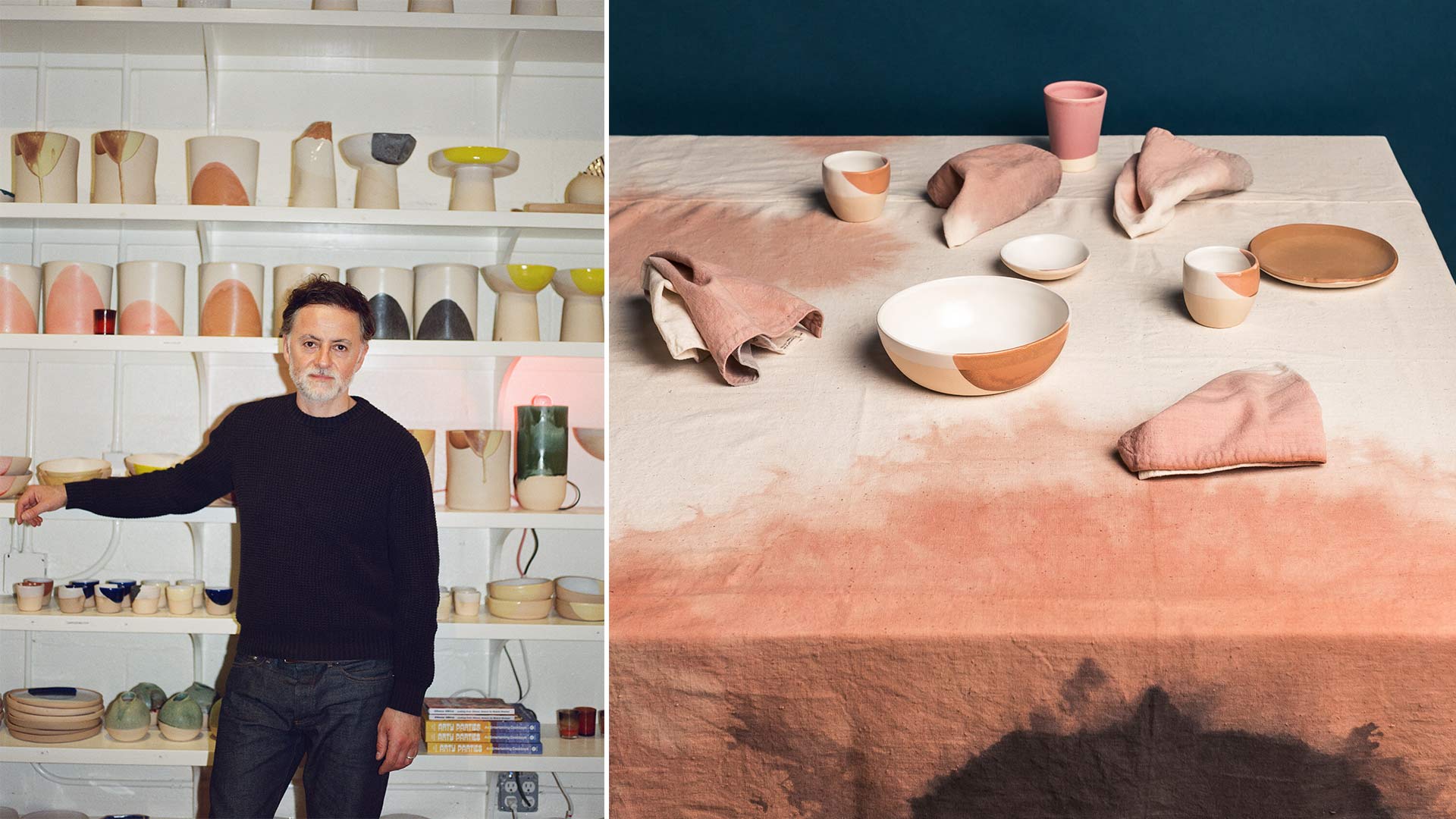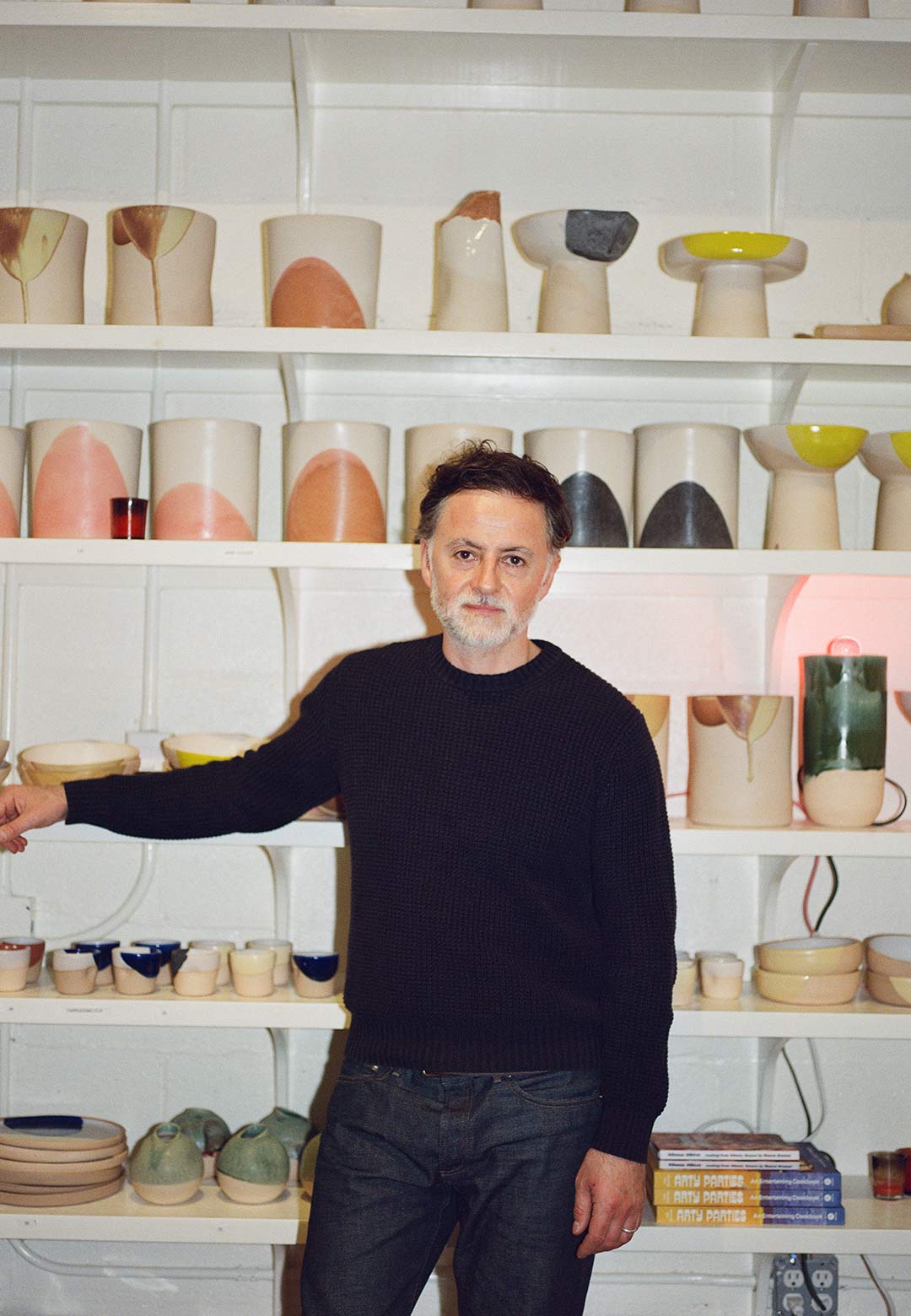To witness the grace of transformation, to work hard and with joy, lie at the heart of Argentinian artist and designer Fernando Aciar’s practice. Aciar runs the Brooklyn-based Fefostudio that crafts lamps, textiles, vessels, and furniture designs wreathed in forms and textural details inspired by everyday life. Founded in 2015, the studio—born of Aciar’s nickname—embodies a multiplicity of values, just as its chef-designer-ceramicist founder nurtures in his own life.
From bowls, cups, plates, and table clothes, to sconce lamps, rugs and table designs, Aciar’s breadth of work is expansive, and includes customisable objects catering to domestic interior designs as well as hospitality spaces. Simple yet artistic, and upholding the wabi-sabi philosophy, Fefostudio’s designs embody ‘beauty without losing sophistication’ and fosters artisanal collaborations that deem ‘craftsmanship as the ultimate luxury.'
“Our products inherit the sensitivity and organic nature that is the world of ceramics, and how each piece simultaneously captures beauty in imperfection and the essence of boundless curiosity within shapes, forms, colours, and spaces,” the New York-based artist and furniture designer says.
Aciar enjoyed baking in his childhood, picking cues from his upbringing in the idyllic setting of the Andes Mountains in Argentina where he was born. He lovingly baked cakes with his mother and as a teenager, had his sister double up as his sous-chef, tinkering and cooking pies to fund trips. It wasn’t long before this fondness turned into a passion. Acair trained for six years under Argentinian chef Francis Mallmann and further explored a tryst at the Chez Panisse in California—referred to as one of the originators of the California cuisine—before opening his first café in Rio de Jeneiro, and subsequently, the OCAFE in two nearby locations in New York, in 2011 and 2014 respectively.
The genesis of the OCAFE sowed seeds of Fefostudio, as the artist-designer extended the café’s ethos to lifestyle and art. A chance encounter with Argentinian architect Marcelo Joulia, who happened to visit the cafe one day, got them to exchange interests and discover their shared affinity for ceramics. This meeting led Aciar to explore his childhood memories of working with clay, as he signed up for a class at the Greenwich House Pottery: turns out, that the revived connection with clay inspired him to craft plates and cups for OCAFE. Brightly accented ceramics manifesting amorphous forms, and evocative of the ethereal imperfections of being rendered by hand, this tableware became an instant hit, paving the genesis of Fefostudio.
A closer look at the atelier's product designs exposes a joyful range of materials and contextual inspirations. The brightly coloured 'Laguna' rug design, nodding to signature ceramic glazes, is made from Mexican felt and an assortment of organic wools and dyes. The robust living room table in a natural cinnamon rose tone is made from a combination of limestone and quartzite. For the ceramic tableware, Aciar uses natural dyes that are made from edible ingredients indigenous to India, including pomegranate skin, tamarind solutions, dates, natural indigo, and sappan wood. The textiles feature geometric, monochromatic patches, as well as an abstract, painting-like composition, made using gradients of a single colour. The medium of clay finds its way into Fefostudio's chic lamp designs as well. To give the forms a distinctive appeal, the product designer uses rutile clay and complements them through wooden features.
Everything that Aciar does begins and ends at the atelier. The studio also promotes artisanal collaborations and enjoys dabbling with different materials and mediums. Beyond products, the artist also likes working with interiors, turning around spaces that speak of connections. On being asked what’s next for the practice, Aciar shares, “I have been working on several projects this year which include the recent launch of a new line of tableware, as well as three carpets. Currently I am working on two home projects in Provence, France, for lamps sconces.”






 Sign in with email
Sign in with email










What do you think?